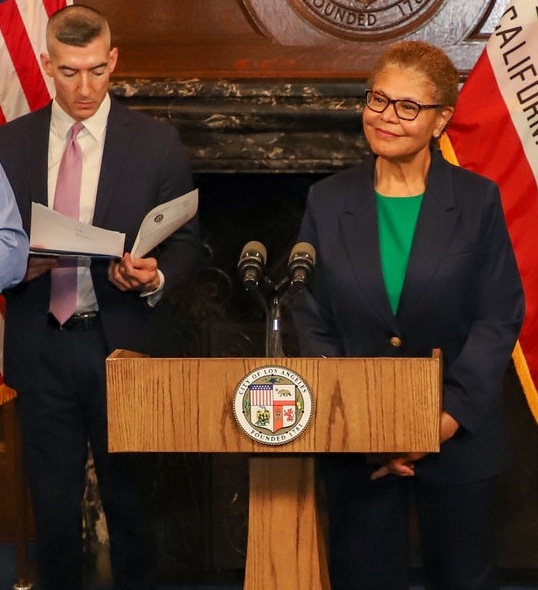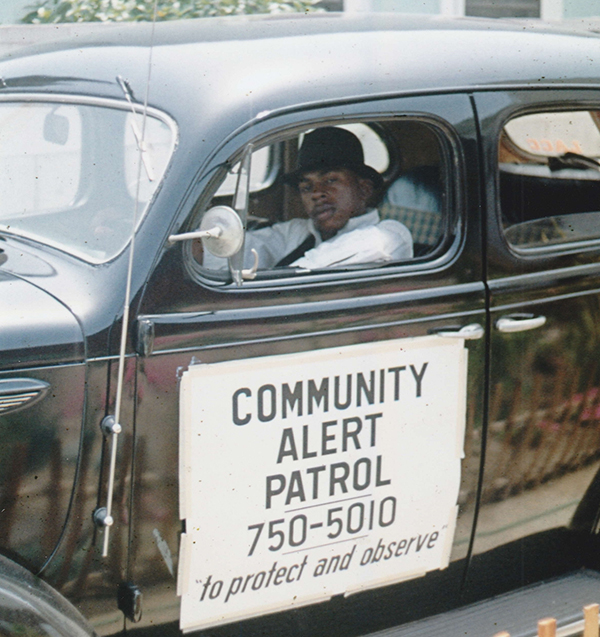Wave Wire Services
LOS ANGELES — Police Chief Michel Moore said the city is on pace to see more than 300 homicides this year — which would be the first time since 2009 — and shootings are up significantly compared to last year.
Moore told the Los Angeles Police Commission Oct. 20 that the city has seen 266 homicides this year, a rise of almost 24% compared to last year and more than 30% compared to 2018.
“This is apparently a much higher presence of people carrying guns and bringing guns into disputes,” Moore said. “Gun thefts from vehicles are up 45% from the same period last year. So we see a phenomena of more guns, more people carrying guns and then disputes escalating to gun violence.”
Moore said it is critical that the Los Angeles Police Department continues to engage in community outreach programs, even in the midst of the COVID-19 pandemic, to try to speak with residents and dissuade gun violence.
The chief said the shootings have taken place mostly in Central and South Los Angeles districts, but there have also been incidents throughout the city.
Moore’s report showed overall shooting victims were up this year compared to last, rising to 978 from 790. Of those victims this year, 462 were identified as Black and 423 were identified as Latino, he said.
“These numbers are startling [for] our efforts to … counter this violence,” Moore said. “I think we also need more [social media] engagement and more efforts in the street to quell the disagreements that apparently are escalating.”
Moore also said the unrest the city saw over the summer has continued in some capacities, although he said the percentage of protests that have not turned violent is much higher.
But he also said the LAPD will acquire shields to keep officers protected for unruly activity during protests, such as having bottles, rocks or projectiles launched at them, and the chief said he hopes discussions on the shields will take place at the commission meeting next week.
“We are incorporating a hurry-up offense, if you will, to require this because as we see the national election approaching quickly, it is our concern about that continued levels of protests and activities that may turn violent,” Moore said. “I think it’s a responsible act for us to add added safety items [and] added safety equipment for personnel.”
The latest major confrontation between police and large crowds in Los Angeles took place Oct. 11, when downtown was hit with a wave of destruction during an impromptu mass celebration of the Lakers’ 17th NBA championship, a gathering that resulted in 76 arrests and injuries to eight police officers.
A report released Oct. 19 by Crosstown, a nonprofit news organization based out of the USC Annenberg School of Journalism, said that while overall crime had decreased during the COVID-19 pandemic, the number of murders had increased by at least 20%.
According to the report, July had the most murders in at least a decade with 40 reported homicides, a 48% increase from June, which had 27 homicides.
The number decreased back to 27 in August, then jumped back up to 36 in September.
The highest number of homicides in one month in 2019 was 27, according to Crosstown.
The Vermont Square area of South Los Angeles saw the biggest increase, with 12 homicide victims between January and September in 2020, compared to three during the same period of 2019. Boyle Heights and downtown each had 15 homicides during those months in 2020.
“With COVID having everything closed, there are fewer mediations happening for a lot of people with no guidance and it’s causing a lot of friction,” retired Los Angeles Police Department Sgt. Curtis Woodle, told Crosstown. Woodle worked as a gang intervention liaison for eight years.
Woodle, as well as ex-gang member Ben “Taco” Owens, spoke to Crosstown about how gang violence has evolved.
Woodle spoke to Crosstown about how a “beef” between people can start on social media, and Owens spoke about “drill rap,” a style of rap music in which rappers promote violence they plan to commit and “diss” rivals.
“It’s an antagonizing form of rap between suspects and victims,” Owens told Crosstown. “One week you can be rapping about how you’re going to shoot Johnny, but then Johnny will get that person first, and it goes back and forth.”
Owens believes that violence rates are also rising due to financial stress during the COVID-19 pandemic and economic crisis, and an increase in guns that can be ordered online and delivered.
Owens also attributed the increase in shootings that began during the July 4 weekend to the “blue flu” in which numerous LAPD officers called in sick. Owens says about 300 calls about shootings were made from the South Los Angeles area that weekend.
Capt. Paul Vernon, who heads the LAPD’s Compstat division, which analyzes crime data, told Crosstown officers who usually work in areas with high rates of violent crime were re-assigned in May and June to alternate duties due to widespread demonstrations, and some were assigned to COVID-19-related duty.
“Those who would perpetrate violent crimes know when the police are present,” Vernon said, according to Crosstown. “They take calculated risks to act and go in public armed.”
Vernon also said there is an increase in shootings that target groups of people, leading to more victims.
“Twenty years ago, drive-by shootings were quite prevalent, but the rate at which persons were shot was low due to the inaccuracy of shooting from a moving vehicle and the distance to the victim,” Vernon told Crosstown.
“Walking up to a victim makes a shooting far more lethal, and when done into a group, the shooter may be more apt to shoot others to preempt someone from shooting back or to eliminate witnesses.”
Vernon said he believes the increase in homicides in 2020 is “significant,” as the Los Angeles homicide rate has steadily fallen over the last three decades, and from 2016 to 2019, homicides dropped nearly 13%.
“We see a phenomena of more guns, more people carrying guns and then disputes escalating to gun violence.”
— LAPD Chief Michel Moore











